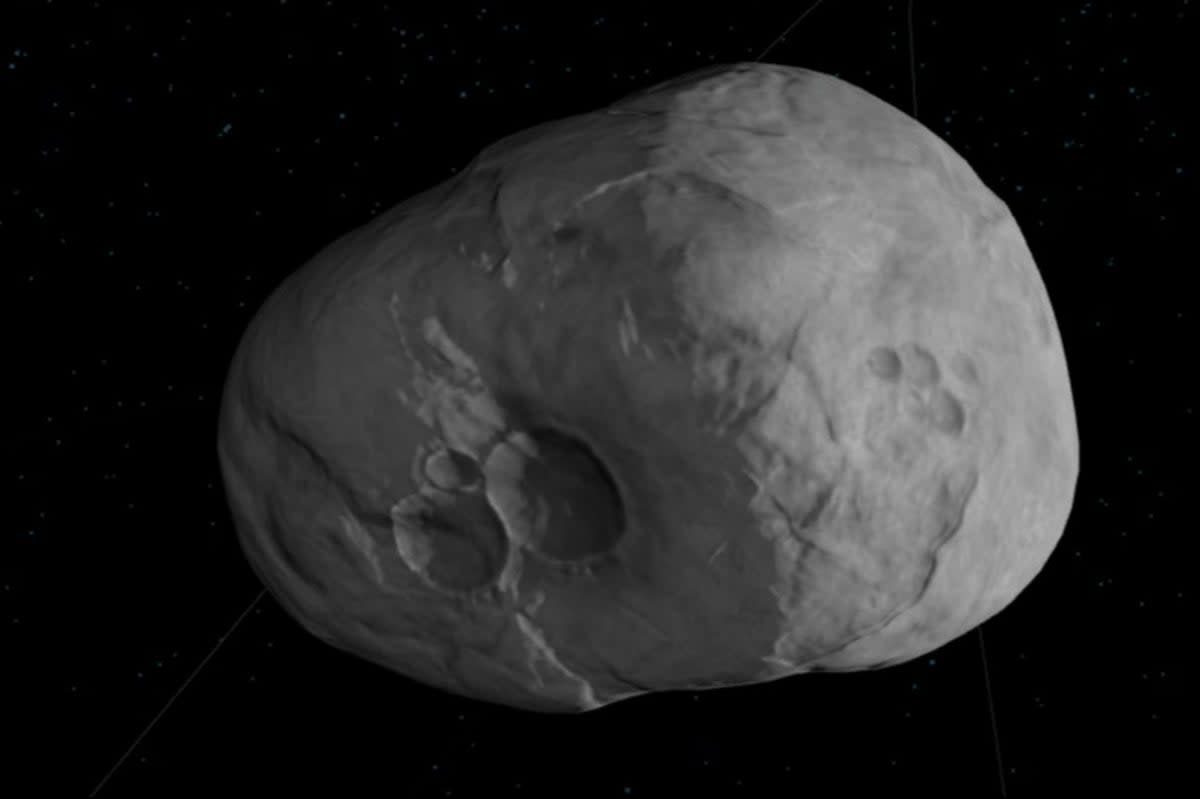Nasa is monitoring an asteroid that could collide with Earth on Valentine’s Day in 2046

Nasa’s top scientists have confirmed they are tracking a newly discovered asteroid that could crash into Earth within the next 25 years.
The space agency’s Asteroid Watch says the giant rock’s trajectory puts it on possible collision course to hit our planet on February 14, 2046.
They admit it has “a very small chance of impacting Earth” but added that “orbit analysts will continue to monitor and update predictions as more data comes in”.
The asteroid measures around 49 metres in diameter - almost the same size as an Olympic swimming pool.
We've been tracking a new asteroid named 2023 DW that has a very small chance of impacting Earth in 2046. Often when new objects are first discovered, it takes several weeks of data to reduce the uncertainties and adequately predict their orbits years into the future. (1/2) pic.twitter.com/SaLC0AUSdP
— NASA Asteroid Watch (@AsteroidWatch) March 7, 2023
“Often when new objects are first discovered, it takes several weeks of data to reduce the uncertainties and adequately predict their orbits years into the future,” Nasa tweeted. “Orbit analysts will continue to monitor asteroid 2023 DW and update predictions as more data comes in.”
According to projections by the European Space Agency, the asteroid has a one in 625 chance of colliding with Earth, while NASA’s Jet Propulsion Laboratory’s Sentry system estimates a chance of one in 560.
The space rock — named 2023 DW — is the only object on NASA’s risk list that ranks 1 out of 10 on the Torino Impact Hazard Scale, a metric for categorizing the projected risk of an object colliding with Earth. All other objects rank at 0 on the Torino scale.
But the 1 rating on the scale means that it’s currently predicted to pose “no unusual level of danger.”
“Current calculations show the chance of collision is extremely unlikely with no cause for public attention or public concern,” that ranking categorization states.
It comes after an asteroid the size of an elephant passed by Earth in January in one of the closest encounters ever recorded.
Asteroid 2023 BU zoomed over the southern tip of South America, only 2,200 miles above the Earth’s surface.
It was the fourth closest passing by an asteroid ever recorded, and closer than the orbit of many satellites.
The asteroid was spotted by an amateur astronomer in Crimea on January 21. In September 2022, NASA crashed its Double Asteroid Redirection Test spacecraft, or DART, into an asteroid to see if it could prevent potentially devastating collisions with Earth. Later NASA confirmed the mission was a success.


